Electric Radiators vs Panel Heaters
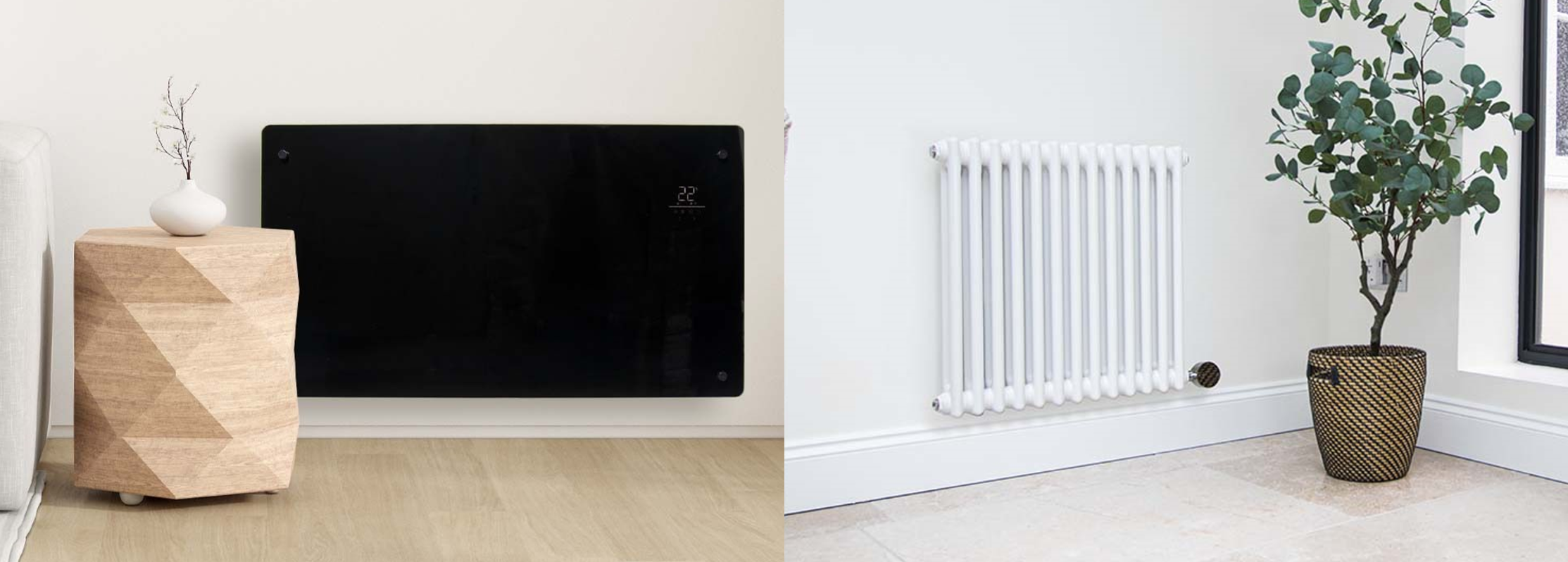

As you search the electric heating market for new heaters for your home, you’ll probably encounter something puzzling when you compare different websites. Whilst sites like ours are selling energy efficient electric radiators in the £199.99 – £699.99 bracket, competitors are advertising products which look very similar for as little as £89.99. Smart, slimline white heaters advertised as “panel heaters” or “convection heaters” look just like our Haverland designer electric radiators – but they seem to be available for almost half the price.
So why wouldn’t you choose panel heaters? Time to bust some industry jargon. What are panel heaters? Are they radiators? What makes them different from our energy efficient electric radiators? Let’s find out…
Check out our electric radiators vs. panel heaters video comparison here.
What are electric panel heaters?
Panel heaters are low-cost home heaters, with highly responsive, unenclosed heating elements. They warm spaces very quickly, are lightweight, and come in a range of simple designs.
How do electric panel heaters work?
Electric panel heaters heat purely by convection, meaning they heat rooms by warming the air. In passing room temperature air over the hot elements in the panel body, warm air is circulated around the room, keeping occupants cosy. Because the elements which heat the air are unenclosed, the heaters are cheaper and easier to manufacture than our electric radiators. Whilst convection heaters can be a fast and effective source of heat, they also come with a few drawbacks which should be considered before choosing this cheaper option.
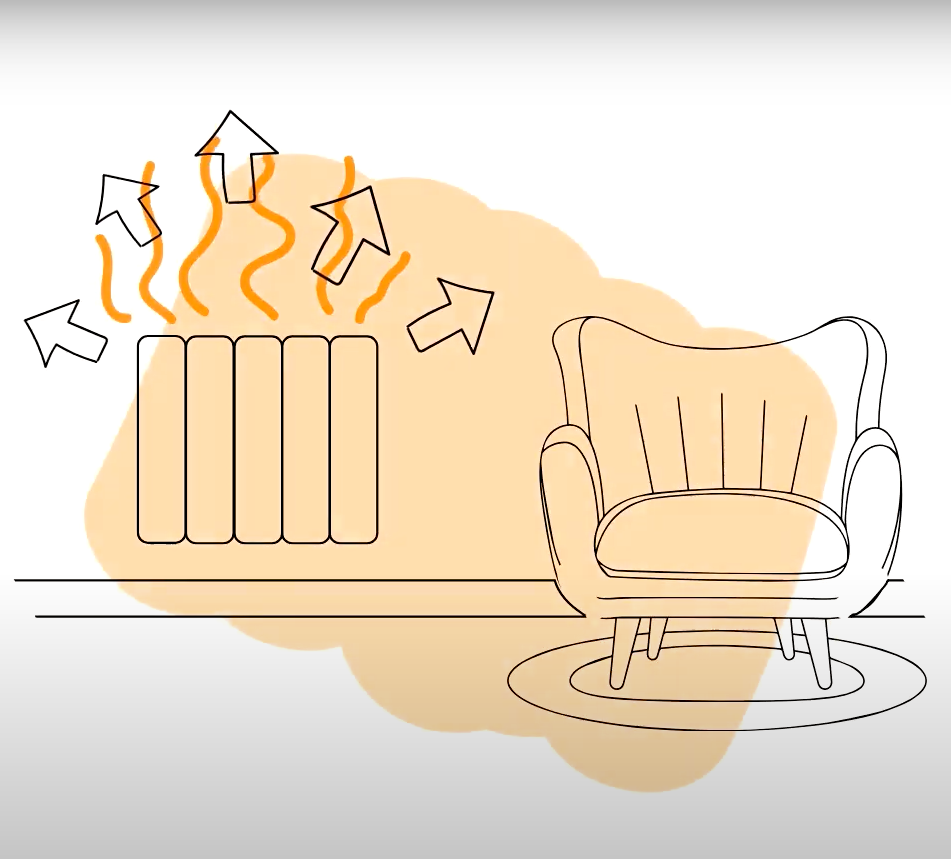

What are the best locations for an electric panel heater?
Whilst energy-efficient electric radiators are a more economical choice for principal home heating, we believe there’s still a place for panel heaters - and this is in less-visited areas that would benefit from a quick burst of heat. The warmth they provide is rapid, with heat-up times of only a few minutes. It’s not the most long-lasting, though, as it’s easily lost to draughts. That being said, rooms that do not require heating every day of the year, like home offices or spare bedrooms, may really benefit from the supplementary heat provided by electric panel heating. Used infrequently, these heaters will not wear out quickly and the running costs will not make a significant impact on your monthly bills.
What are electric radiators?
Unlike electric panel heaters, electric radiators heat up all over - it’s not only their elements that get hot. They are generally more expensive than panel heaters, but provide more robust warmth due to the way they heat.
How do electric radiators work?
Electric radiators use a combination of convection and radiation to generate heat. With oil-filled and dry thermal electric radiators, this is even stevens - with 50% coming from convection and 50% from radiant warmth. However, with ceramic electric radiators, the amount of radiant warmth output is higher - closer to two thirds of their heat is delivered this way.
Radiant warmth, or radiation, mimics the type of heat given off by the sun - minus any harmful UV rays! It travels in a direct line from the heat source to warm people and objects directly, regardless of the temperature of the air. It is long-lasting, durable, and is unaffected by airflow - making it an ideal choice for draughty locales.
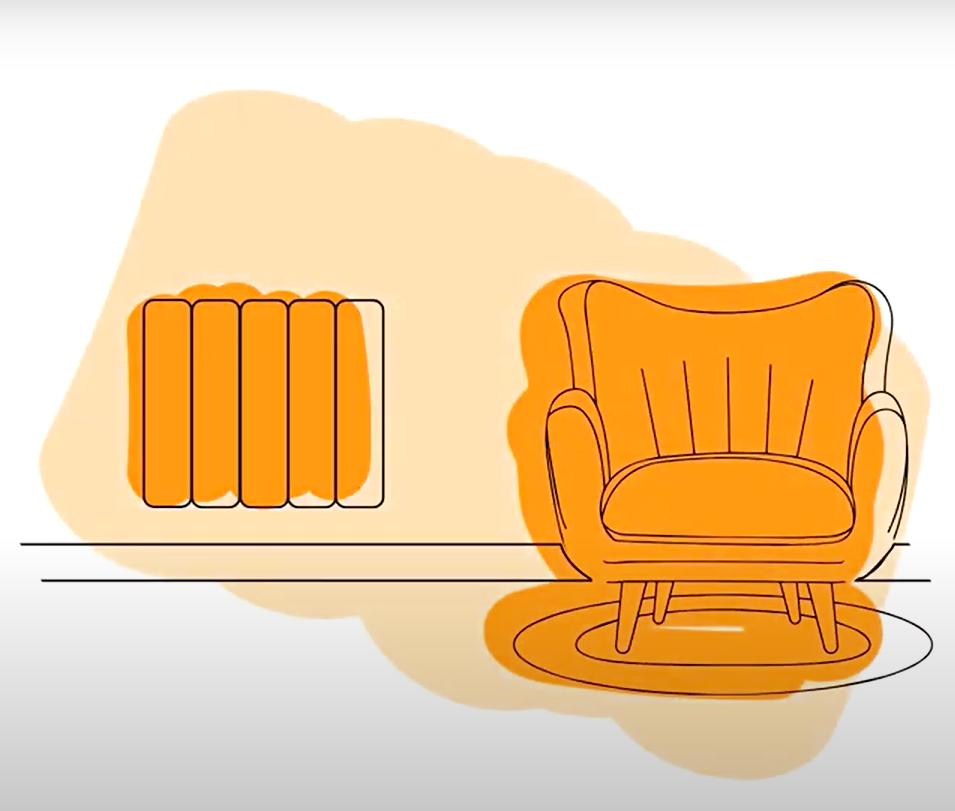

How do electric radiators work?
Due to the way they heat, electric radiators are a better fit for a primary heating source than electric panel heaters. So, if you’re looking to replace the gas central heating in your home for something more energy-efficient, then electric radiators would be the perfect choice. They can be fitted throughout a property, from your bedroom to your kitchen, and are easy to install - requiring absolutely no pipework extension.
What are the best locations for an electric radiator?
Due to the way they heat, electric radiators are a better fit for a primary heating source than electric panel heaters. So, if you’re looking to replace the gas central heating in your home for something more energy-efficient, then electric radiators would be the perfect choice. They can be fitted throughout a property, from your bedroom to your kitchen, and are easy to install - requiring absolutely no pipework extension.
What are the differences between panel heaters and electric radiators?
Panel heaters are less efficient than electric radiators
Convected heat is inherently less efficient than radiated heat. Radiation heats people directly, transferring energy in one straight-forward transaction. Convection heat is more convoluted. Panel heaters transfer heat to the air which in turn transfers heat to the people in the room. This is much less efficient. Heating by radiation effectively cuts out the middle man in the convection heating process, allowing less scope for energy loss. This means that you’ll need to use more power to heat your room with panel heaters than you would with energy efficient electric radiators. This in turn makes the heaters more expensive to run than radiators. If you use a panel heater frequently, any initial savings you made by choosing it over an electric radiator would quickly be outweighed by the greater running costs.
In this video, we run down how convection heaters are less efficient than infrared haters and electric radiators.
Panel heaters are not suitable for constant use
The unenclosed elements which make panel heaters cheap to produce have some unfortunate disadvantages. Because the hot elements come into direct contact with the air, any dust circulating around the room can burn and leave sooty deposits on the wall. Over time this can cause wall blackening and damage to paintwork. Circulating dust particles can also agitate allergies. This means that panel heaters should not be used as your primary home heating source. The good news is that wall-blackening only becomes a problem for panel heaters if they're used every day; if you have a panel heater for portable use, or for heating a secondary space like a spare room, wall blackening won't be a problem. Wall-blackening is an issue common to all convection heaters – no matter what the brand, price or style.
Panel heaters are less durable than electric radiators
Because panel heaters are less efficient than electric radiators, they have to work much harder to heat home spaces. This can give them significantly shorter lifespans than our energy efficient radiators. The lifespans of panel heaters often suffer from cheaper manufacturing designed to satisfy a demand for low priced heaters. Again, this is only a problem if you intend to use panel heaters as your prime source of heat – a shorter lifespan will not be an issue in rooms you only use occasionally.
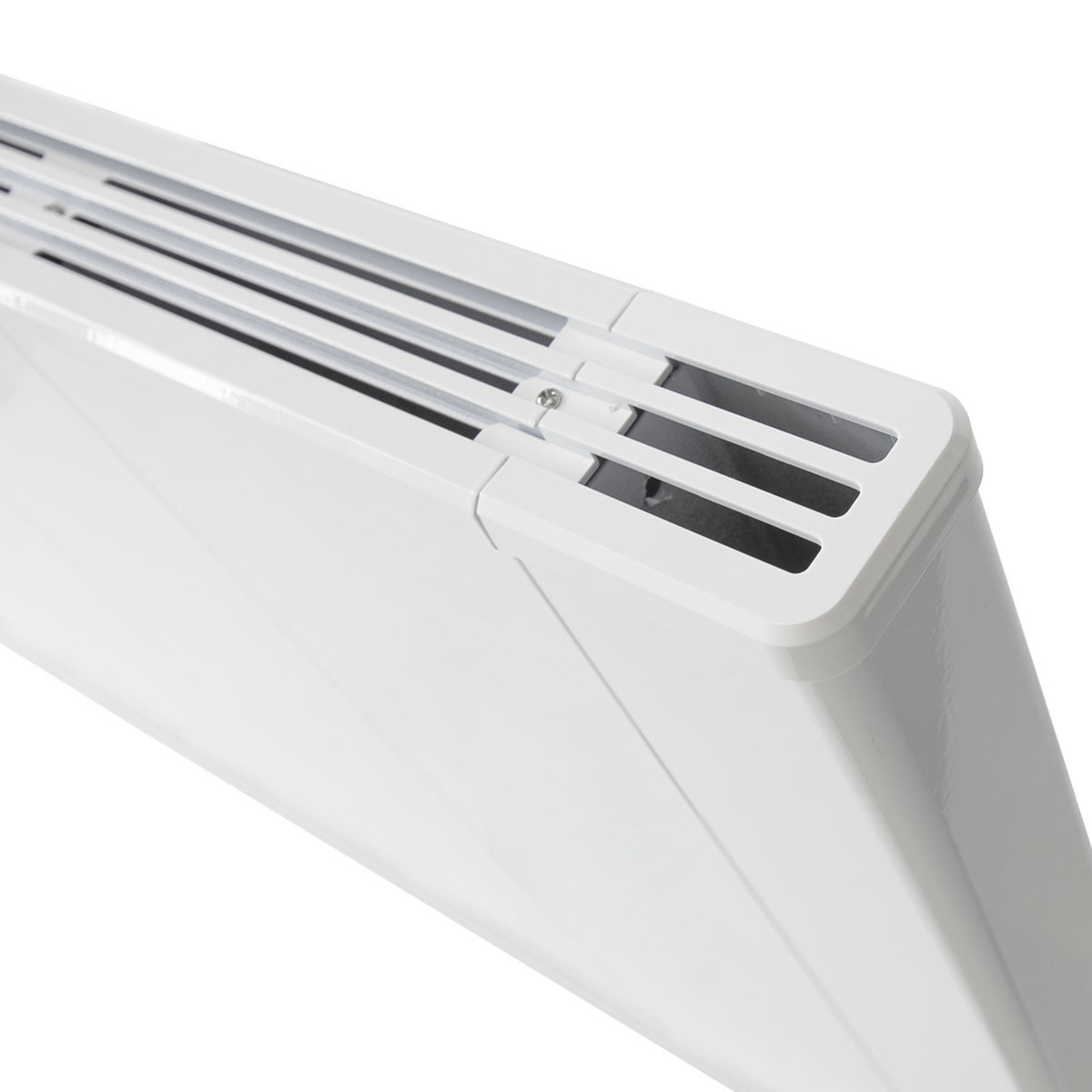

What are the similarities between electric panel heaters and electric radiators?
Despite their differences, electric panel heaters and electric radiators do have some crossovers - namely when it comes to installation and maintenance.
Seamless installation options
Both electric radiators and electric panel heaters offer quick, easy and versatile installation options, meaning getting your heating set up in a jiffy is easy. As both units heat via electricity, there’s no need to extend or create new gas networks in your home for them to work - eliminating any costly fitting fees.
All electric panel heaters are DIY friendly - they require zero need for an electrician, as they simply plug into the standard 3-pin sockets dotted about your home. This of course enhances their portability, especially as they often come with attachable feet, so they can be placed exactly where heat is needed most. If a more permanent, tidier aesthetic is required, mounting them to a wall is a simple job for those with rudimentary DIY skills. Our electric panel heaters always come with the necessary fittings, templates and detailed instructions to make wall-mounting an absolute breeze.
Electric radiators are less cut-and-dry, but some models do offer the same versatility when it comes to DIY setups and freestanding fitting options. Oil-filled electric radiators generally tend to need hardwiring into your mains electricity by a qualified electrician, and are therefore not DIY-friendly. Due to their size, they also usually need to be wall-mounted. Dry thermal and ceramic electric radiators have options suitable for DIY fitting and freestanding installation, for a more versatile fit.


Zero required maintenance
As electric heaters like panel heaters and electric radiators are not connected to a combustible fuel source, like gas systems are, they do not require any annual maintenance. Wave goodbye to those yearly services - panel heaters and electric radiators merely require a quick dust and clean every now and then to ensure the unit remains debris-free.
Our top recommendations
An electric radiator built for modern lifestyles: Ecostrad iQ Ceramic
Top features on the iQ Ceramic:
● Weekly programming
● WiFi control
● Self-programming motion sensor mode
● Glossy white and textured black finishes available
● Freestanding feet available as a purchasable extra: White | Black
We have a range of electric radiators that offer a number of energy-saving features on our website, but Ecostrad’s iQ Ceramic is the typification of modern electric heating: simple to use, attractive to look at, and designed to reflect our users’ lifestyles to a tee. A ceramic stone radiator, the iQ Ceramic is able to lock all heat generated into its core, so that warmth carries on distributing even after switch off. With a simple, understated design, the iQ Ceramic is the perfect accompaniment to both modern and traditional interior design schemes.
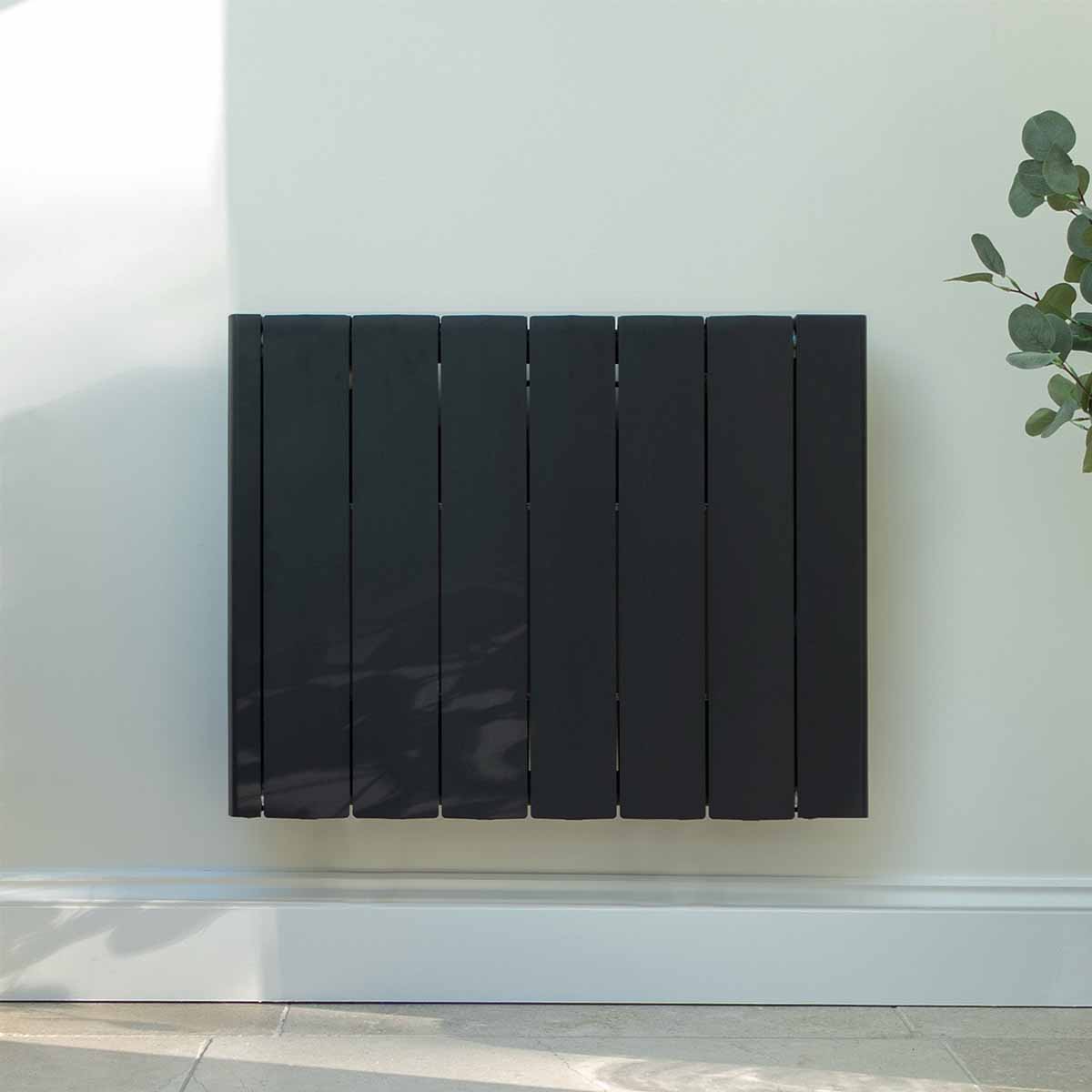

Controllable via WiFi, the iQ Ceramic simply needs to be connected up to either the Ecostrad Ecosystem or Smartlife app - accessible on a smart device. Making adjustments to your heating from anywhere in the world when connected to WiFi is made totally straightforward - ensuring energy is only ever used when needed. The iQ Ceramic even has a clever motion sensor mode, detecting when a room is occupied all of its own accord - programming your radiator all with zero effort on your part.
Supplementary heating for any space: Ecostrad iQ Plus
Top features on the iQ Plus:
● Smart speaker compatible
● On-demand warmth
● WiFi app control
● Smart white finish
● Freestanding feet included in box
If your home is particularly draughty and struggles to retain heat, investing in a panel heater alongside a more permanent heating source like an electric radiator may be a good idea. Our range of electric solutions also includes panel heating, such as the Ecostrad iQ Plus. A sophisticated panel heater that comes with extensive programming features such as WiFi and voice control, the iQ Plus allows you to control your heating on-the-go or hands-free at home. This heater comes supplied with its own feet so you can install it as a freestanding heating option for portable heating that’s ideal for temporary use.
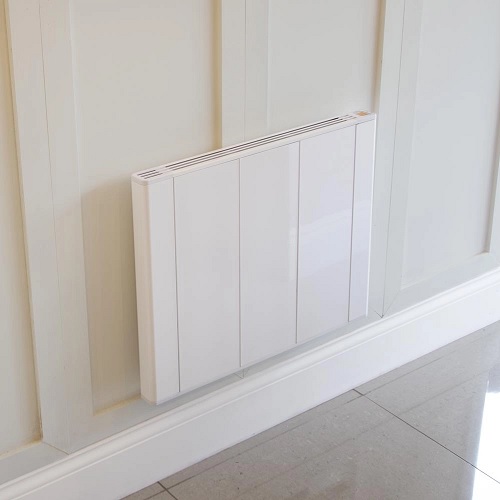

Electric heating: an option for every home
Making the choice between an electric radiator and an electric panel heater mainly depends on intention for use. Panel heating offers quick, responsive heat, providing top-up heat to chillier spots in your home. For a totally universal heating method, designed for use throughout the day, electric radiators are the ideal choice. For more information about our products, advice on which heaters would be best for your property, and a free quote, give our expert sales advisors a call on 0330 300 4444.





